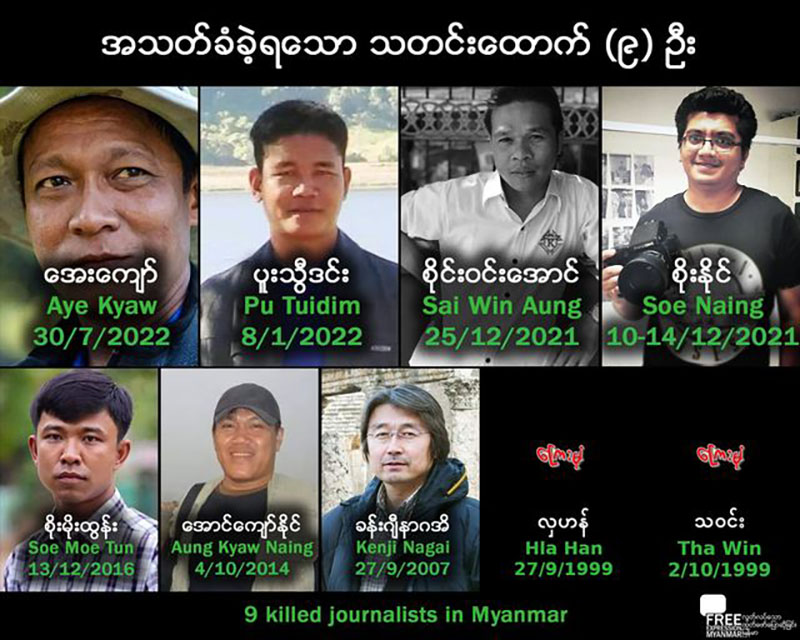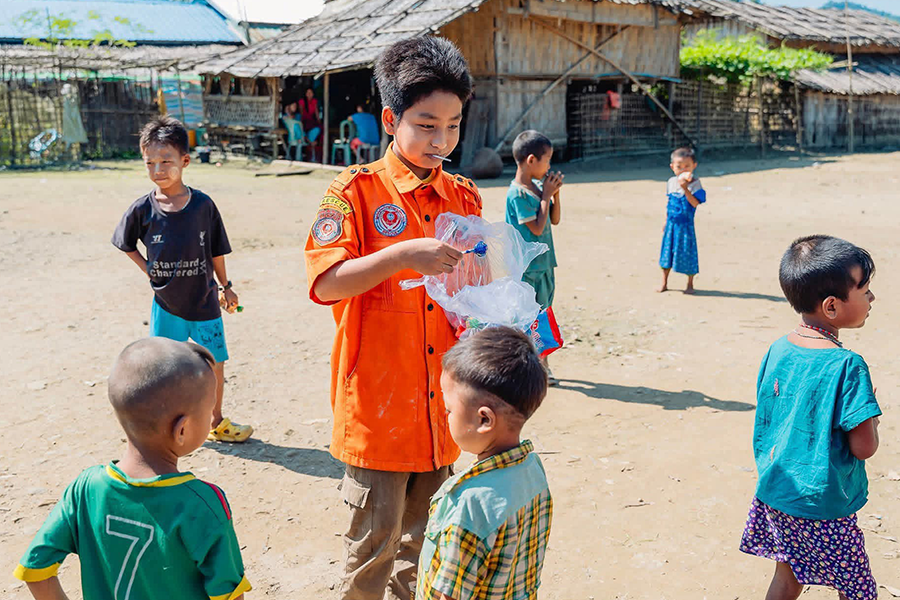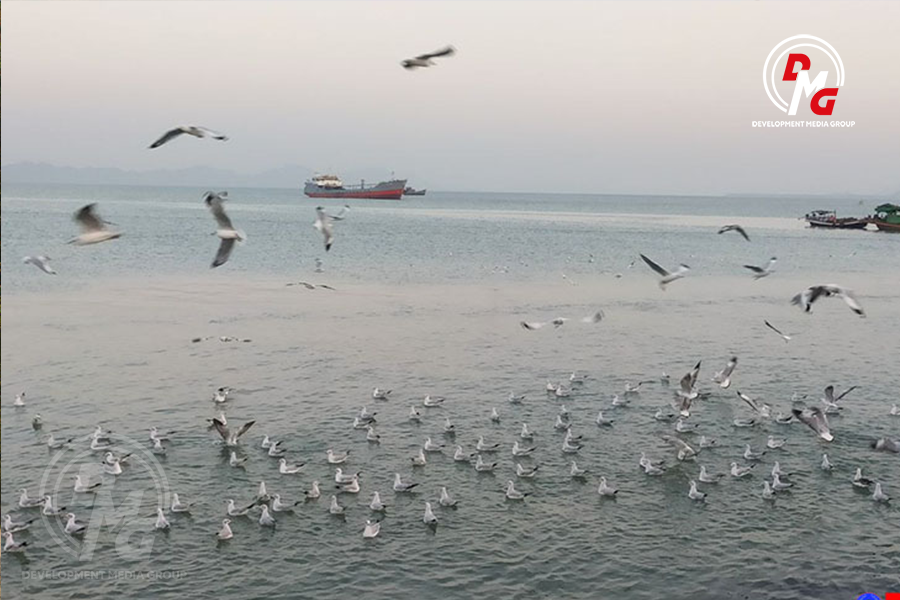- Junta unable to hold elections in dozens of wards and village-tracts in Sittwe, Kyaukphyu
- Fighting escalates between Myanmar military, Arakan Army in Ayeyarwady Region
- Regime steps up civilian arrests in Sittwe
- ULA safeguards Mrauk-U's ancient heritage
- Arakan on the Edge: What the DMG Landmine Impact Report Reveals About Myanmar's Deepening Humanitarian Crisis
Free expression group calls out junta’s acts of impunity against journalists
Four journalists were killed in Myanmar since last year’s military coup, and five others were killed before the putsch dating back to 1999, with the perpetrators of these crimes enjoying impunity, Free Expression Myanmar (FEM) said in a statement marking International Day to End Impunity for Crimes against Journalists on Wednesday
03 Nov 2022

DMG Newsroom
3 November 2022, Sittwe
Four journalists were killed in Myanmar since last year’s military coup, and five others were killed before the putsch dating back to 1999, with the perpetrators of these crimes enjoying impunity, Free Expression Myanmar (FEM) said in a statement marking International Day to End Impunity for Crimes against Journalists on Wednesday
The statement sought to remember the nine slain journalists, and to express solidarity with all those journalists in Myanmar who have been injured, tortured or subjected to sexual violence with no recourse to justice due to the military’s decades of impunity.
The military-controlled police force and courts cannot or will not conduct investigations and bring perpetrators to justice. National remedies do not exist and must be considered exhausted, said the FEM.
The statement called on international stakeholders including international courts to act to hold the perpetrators to account. Foreign courts and foreign prosecutors should use any available universal jurisdiction provisions to hold perpetrators to account and provide justice to the Myanmar people, the statement suggested.
“Such impunity encourages further crimes. We must keep demanding that perpetrators be held accountable, otherwise there will be more crimes,” said a veteran journalist.
The four journalists killed after the military’s February 1, 2021, coup were photographer Soe Naing, who died in military custody in December 2021; Sai Win Aung, who was killed by a junta artillery strike on December 25, 2021; Pu Tuidim, who was killed while being used by the military as a human shield on January 8, 2022; and photographer Aye Kyaw, who also died in military custody on July 30, 2022, according to the FEM.
The five journalists killed before the coup were Soe Moe Tun, killed in 2016; Aung Kyaw Naing aka Ko Par Gyi, tortured to death in military custody in 2014; Japanese journalist Kenji Nagai, fatally shot while covering the 2007 Saffron Revolution; and U Tha Win and U Hla Han, both killed in 1999.
“Journalists have been forced to do their job in hiding, as if they were criminals,” said a veteran Arakanese journalist who asked for anonymity out of fear of reprisals. “This shows journalists are being targeted by the regime. The press is shackled in Myanmar.”
Myanmar’s military regime has also tortured and sexually assaulted several journalists since the coup without consequence, said the FEM.
Photojournalist Kaung Sett Lin and videographer Hmu Yadanar Khet Moh Moh Tun were both seriously injured when they were hit by a truck driven by soldiers who ploughed into a group of protesters on December 5, 2021.
And military officials have reportedly resorted to sexual violence against both female and male journalists being held in custody, a harrowing ordeal recounted by the reporter Ye Mon in his own words being just one example.
The Committee to Protect Journalists (CPJ), a global press freedom group, included Myanmar in its annual Global Impunity Index for the first time this year.






.png)










